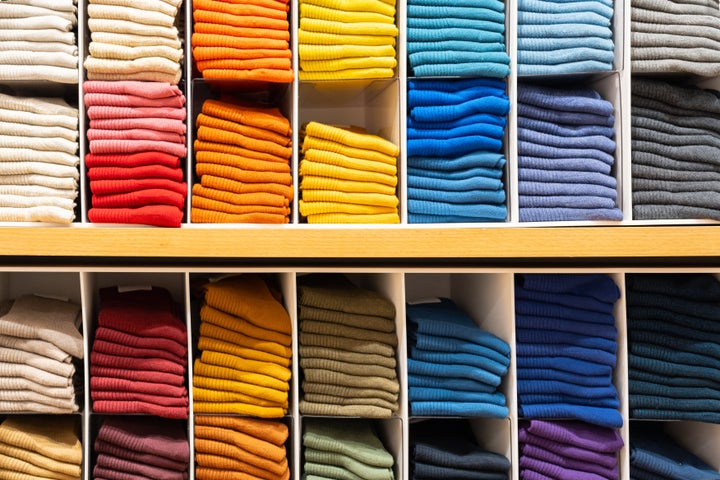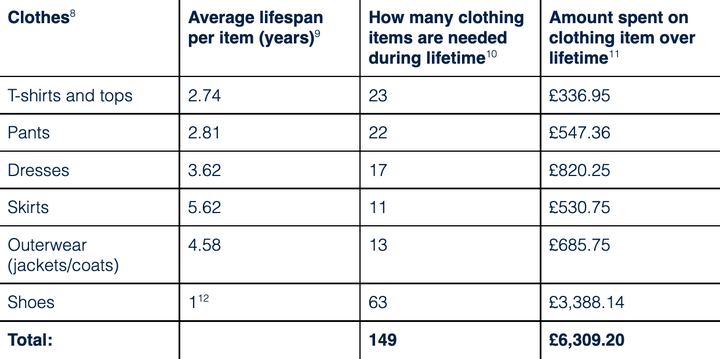
Stop buying so many clothes! We all know the advice by now, but it might help to put some numbers on it.
Well, apparently, you only need 149 items of clothing – across a whole lifetime.
Even though more than 60% of householders report having unwanted clothes in their homes, according to ONS data, the average person in the UK spends an average of £43.88 on clothes every month, adding up to £526.50 per year.
The sustainable clothing brand Rapanui has multiplied those figures by the current average length of adult life (63.2 years) to calculate that we each spend a whopping £33,274.80 on clothes, when we would only need £6,309.20′s worth if we used them for their full lifespan.
That £33,724.80 equates to a total of 786 pieces of clothing over a lifetime – 637 of which we don’t need and ultimately go to waste, contributing to the 350,000 tonnes of wearable clothing that goes to landfill every year.
And what’s bad for the planet is also bad for our pockets – if we kept to a more sustainable capsule wardrobe of “just” 149 items in our lives, we could save a staggering £26,965.60.
A big social media trend with 286.4 million views on TikTok and over 39,000 Google searches in 2022 alone, a “capsule wardrobe” is a minimalist approach to building a small collection of fashion items that can be used to create several different outfits with carefully selected pieces that will forever stay in style.
Here’s how much money you could save by building one yourself, according to Rapanui.

If we don’t change our fast fashion spending habits fast, by 2050, fashion will take up a quarter of the world’s carbon budget. So how can we ensure the clothes we do buy stay in good condition?
“Always follow the wash care label on the individual pieces of clothing to make sure that you’re not causing any damage or shrinking items, making them unwearable,” Rheanna Coleman, supply chain lead at Rapanui says.
“Aside from specific steps we’d recommend a cool wash at 30°C and hang drying products to ensure longevity and reduce the environmental impact of the washing process.”
As well the capsule wardrobe approach, Mart Drake-Knight, co-founder of sustainable merch platform Teemill, recommends buying from brands that embrace circular fashion.
“In a circular process products are designed from the start to be remade,” he explains. “That means materials flow back to the maker and the new product is made from the old product. It is different from recycling, or upcycling, where the material is turned into something different before it is then thrown away.
“Circularity means designing products that are made to be remade, creating an option for fashion to be more sustainable for the planet than ever before.”